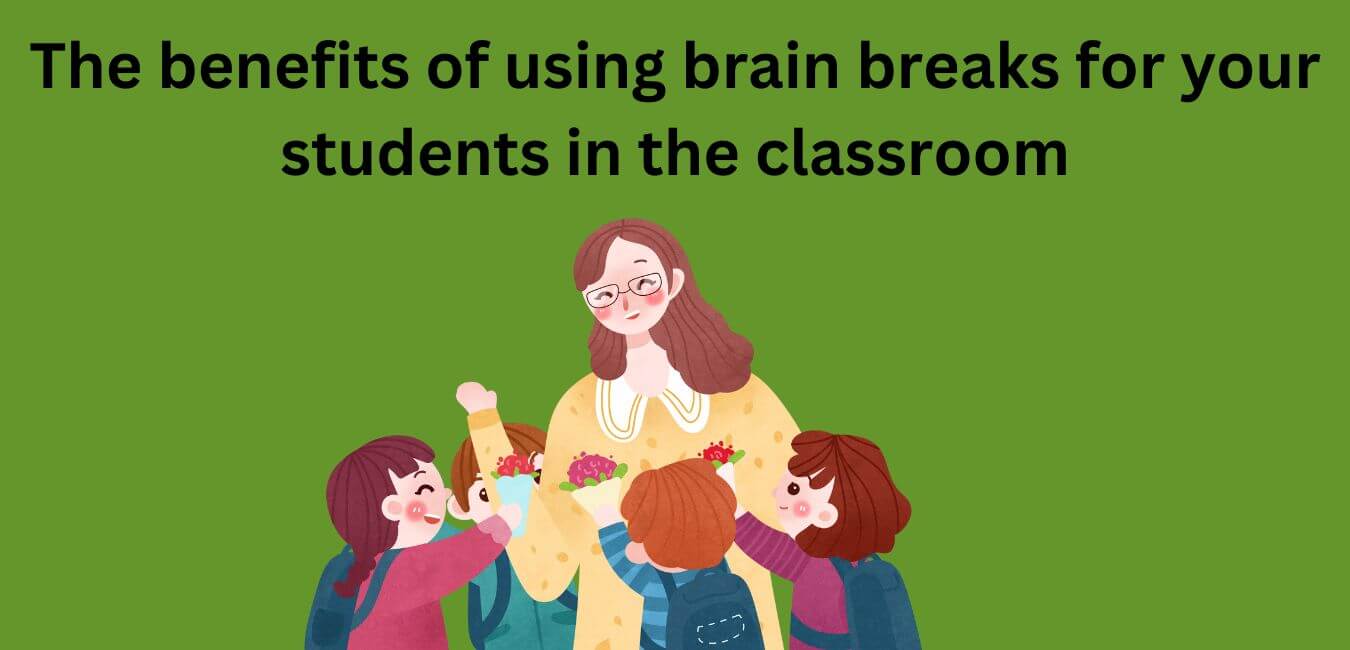Flexibility is key for teachers in the classroom. Flexibility makes teachers effective in the classroom. It allows them to be open to new ideas, adapt to changes, and meet the needs of their students. Being flexible also requires that teachers be willing to let go of some control and allow their students to take the lead.
There are many ways to be flexible, and the best way is to tailor your approach to each individual student.
In this article, I have provided some tips on how to be flexible as a teacher in your classroom. Read through for more information.

What does it mean to be flexible as a teacher?
To be flexible as a teacher means being able to adapt your teaching methods to the needs of your students.
It also means being willing to try new things in order to better meet the needs of your students.
Flexibility is an important quality for teachers because it allows them to be more effective in their work.
The 6 benefits of flexibility in the classroom:
1. Being a Flexible teacher leads to improved student engagement
Being a flexible teacher leads to improved student engagement. This is because students are more likely to be engaged in their learning when they feel that their teacher is responsive to their individual needs and interests.
When students feel that their teacher is open to hearing their ideas and concerns, they are more likely to be actively involved in the learning process.
As a result, both teachers and students benefit from increased flexibility in the classroom.
2. Being a flexible teacher leads to increased student motivation
Flexible teachers are able to adapt their teaching methods to better suit the needs of their students, which leads to increased student motivation.
Students who feel that their teachers are responsive to their individual needs are more likely to be engaged in the learning process and motivated to succeed.
When teachers are inflexible, it can lead to students feeling discouraged and unmotivated.
3. Being a flexible teacher leads to better behavior management
A flexible teacher is more likely to be successful in managing student behavior. This is because a flexible teacher is able to adapt their teaching methods to better suit the needs of their students.
Additionally, a flexible teacher is also more likely to be able to build positive relationships with their students, which can help to prevent behavioral issues from arising in the first place.
4. Being a flexible teacher leads to enhanced student learning
Flexible teachers are able to adapt their teaching methods to better suit their students’ needs, resulting in enhanced student learning.
This can be done by tailoring lesson plans to individual students or groups of students, using a variety of teaching methods, and being willing to adjust course content as needed.
Flexible teachers are also open to feedback from their students and take this feedback into account when planning future lessons.
By being flexible, teachers are able to provide their students with a more customized and effective learning experience.
5. Being a flexible teacher leads to greater creativity and innovation
Being a flexible teacher leads to greater creativity and innovation in the classroom. Flexible teachers are able to adapt their teaching methods to the needs of their students, which leads to more engaged and excited students.
Also, flexible teachers are able to be more innovative in their teaching, incorporating new technologies and ideas into the classroom.
This allows students to have a more enriching and enjoyable learning experience.
6. Being a flexible teacher leads to improved teacher morale
When teachers are flexible in their approach to teaching, they tend to have improved morale.
This is because they feel like they have more control over their classrooms and are able to be more creative in their teaching.
Also, flexible teachers are often seen as more supportive by their colleagues, which can lead to better relationships and communication within the school.
15 Tips for being flexible in the classroom
1. Be open to change. Things will always come up that you didn’t plan for. Be open to change and adapt as needed.
Change is inevitable, and it’s often for the best. Embrace it instead of resisting it, and you’ll be much happier. Who knows? The change might even be exactly what you needed.
2. Be prepared for anything. Have a backup plan for everything. You never know when something will go wrong or when you’ll need to change your plans.
You never know when something will go wrong or when you’ll need to change your plans, so it’s important to be prepared for anything.
Have a backup plan for everything so that you can always pivot and stay on course.
By being prepared, you’ll be able to adapt to any situation and come out ahead.
3. Be flexible with your schedule. If something comes up, be willing to adjust your schedule accordingly. Don’t be afraid to move things around if it means that you can accommodate your students better.
A flexible schedule is important for accommodating your students. If something comes up, be willing to adjust your schedule accordingly.
Don’t be afraid to move things around if it means that you can accommodate your students better.
4. Be flexible with your teaching methods. Not every method works for every student or every situation. If you’re struggling with a particular strategy, try something new.
Being flexible with your teaching methods is important. Not every method works for every student or every situation.
If you’re struggling with a particular strategy, try something new. This will help you find a method that works better for your students.
5. Be flexible with your lesson plans.
If you’ve planned out every minute of the day and a student, parent or other teacher comes up to you and asks for help, be willing to adjust your schedule.
If you’re flexible with your lesson plans, you’ll be able to accommodate students, parents, and other teachers who need help.
By being willing to adjust your schedule, you can make sure that everyone gets the assistance they need.
6. Be flexible with your classroom management.
Consider different ways of dealing with classroom management situations rather than getting frustrated and disciplining the student.
For example, if a student is disrupting your class, it is important to be flexible in your approach to managing the situation.
There may be different ways of dealing with the situation that is more effective than simply disciplining the student.
Taking the time to consider different options can help you find a solution that works best for everyone involved.
7. Be flexible with your expectations.
If you set a high bar for your students, then be willing to lower it when they don’t meet your expectations.
If you expect your students to perform at a high level, be prepared to lower your expectations if they don’t meet your standards.
It’s important to be flexible with your expectations in order to avoid setting your students up for disappointment.
8. Be flexible with the way you assess your students.
It’s important to be flexible when assessing your students. If one method doesn’t work, try another or come up with a new way to assess their progress.
This will give you a better understanding of where they’re at and how they’re progressing.
9. Be flexible with the way you use your time if you want to be a flexible teacher.
To be a flexible teacher, you need to be flexible with the way you use your time. This means being open to new and different ways of doing things, and being willing to change the way you do things if it would be more effective.
It also means being able to adapt to the needs of your students, and being able to make changes in your teaching methods if necessary.
If you have a test scheduled for Friday but haven’t finished all the material by Thursday, consider moving the test up a day and working through the material on Friday.
10. Be flexible with deadlines if you want to be a flexible teacher.
If you want to be a flexible teacher, then you need to be flexible with deadlines. This means that you should be willing to adjust your deadlines based on the needs of your students.
If a student is struggling with a particular assignment, then you should be willing to give them more time to complete it.
Similarly, if a student is doing well and wants to finish early, then you should be willing to let them do so.
By being flexible with deadlines, you will show your students that you are willing to work with them to meet their needs.
11. Be flexible with your goals if you want to be flexible as a teacher. If you didn’t reach a goal, try again.
Being flexible with your goals as a teacher can be very beneficial. If you didn’t reach a goal the first time, try again and see if you can be successful. Being flexible will allow you to be more successful in the long run.
12. Be flexible with how you view your students.
If one student is struggling, treat her differently than you would another student who is excelling.
It’s important to be flexible when you’re teaching, because every student learns differently. If one student is struggling, you might need to give her more attention than another student who is excelling.
Every student is different, and it’s important to adjust your teaching style accordingly.
13. Be flexible with the way you assess yourself as a teacher. Constantly evaluate what you are doing and try to learn from your mistakes.
As a teacher, it is important to be flexible in your self-assessment. Constantly evaluate what you are doing and try to learn from your mistakes. This will help you become a better teacher and help your students achieve success.
14. Be flexible with the way you view the world.
Be flexible in the way you view the world. The world is constantly changing, and so are people’s views on different issues.
Don’t cling to old ways of thinking that no longer work. Instead, be open to new perspectives and ways of doing things.
This will help you adapt to the ever-changing world around you and stay one step ahead of the curve.
15. Be flexible with your ideas about what a teacher should look like and do.
Teachers today are expected to be more than subject-matter experts. They must also be an instructional coach, a mentor, and an advocate for their students.
Conclusion
In conclusion, being a flexible teacher in the classroom is essential to student success. By being able to adapt to different situations and students’ needs, teachers can provide the best possible education for their students. With the ever-changing landscape of education, it is more important than ever for teachers to be flexible in order to meet the needs of their students.














